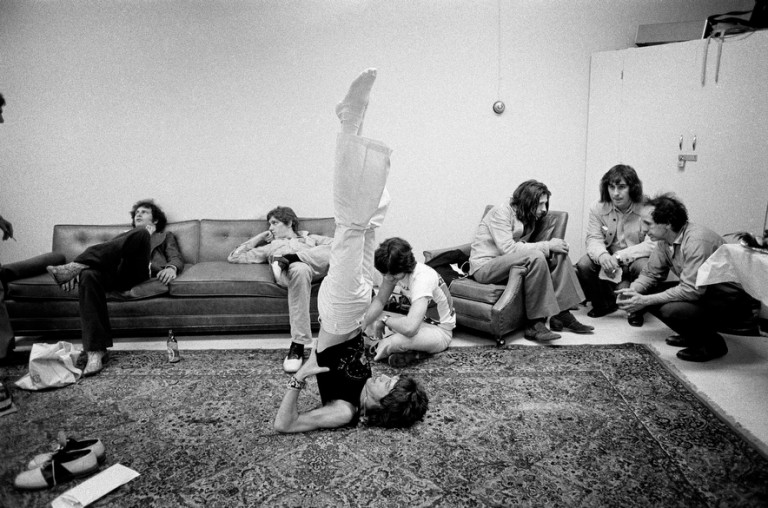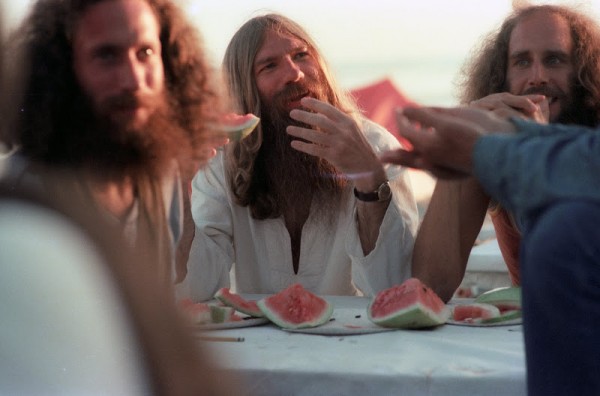PLAY WITH FIRE

Melina Meza is one of our favorite yoga all-stars. With a BA in Nutrition from Bastyr University, she’s also a certified Ayurveda Health Educator from the California College of Ayurveda who’s been exploring the art and science of yoga and nutrition for over 20 years. She combines her knowledge of Hatha Yoga, Ayurveda, whole foods nutrition, and healthy lifestyle promotion into a unique style called Seasonal Vinyasa.
Ayurveda is the traditional Hindu system of medicine, which is based on the idea of balance in bodily systems and uses diet, herbal treatment, and yogic breathing.
Her Ayurvedic summer guidance for daily rituals, yoga asanas and pranayama breathing exercises will leave you feeling better prepared to align yourself with the season.
SUMMER (grisma)
Elements = Fire + Water
- Fire qualities: heating, intense, bright, rhythmic
- Water qualities: fluid, cooling, calming, graceful
Depending on where you live, you may think summer is never long enough (like in the Pacific Northwest), or that it’s always too long (like in the South). Regardless of your geographical location, I believe summer is the one and only season where Westerners live at the appropriate pace, one that is in sync with Nature. It is the one time of year where you are encouraged to take a break from school, go on vacations, swim, hike, play outdoor sports, eat lots of fresh fruits and vegetables, hang out with friends, work less, and even take a nap in the middle of the day.
Summer is a Pitta season, and as such, fire and water elements will be more predominant, and most people will feel the heat, sweat more, and seek refuge in cool water to help regulate their internal furnace. Relaxing is one of the best ways to decrease Pitta’s hot, ambitious nature and prevent your elements from going out of balance in the first place. It’s best to take it easy, do less, and take frequent deep breaths in a hammock under the shade of your favorite tree. If you do this, you will learn firsthand what the “opposites decrease” sutra is all about.
Adapt your life to live with the seasons and you will soon realize Mother Nature varies her workload every few months.
The generosity you experience in summer occurs because there was a dormant, resting period in the winter and a cleansing and rooting phase in the spring, both of which helped pave the way for a clear and efficient flow of prana into the summer fruits, vegetables, trees, and plants. Without the balance and partnership of the previous seasons, summer would lack her abundance.
In the Western culture, there is a tendency to try to be consistently productive all year round, without exception. On an intuitive level, most people know that taking downtime in the summer feels right because everybody needs and deserves a break. In the West, the work environment and ethics are aligned with the Pitta elements and create a world for enthusiastic people to strive for perfection and power, reflecting the “like increases like” sutra.
When the Pitta elements are out of balance in your lifestyle or in your body, what you notice is often a feeling of being burned out, dried up, tired, and angry.
You carry along companions like regret, especially if others around you are having fun. When it’s hot, bright, and perhaps dry or humid outside, it’s best not to take on too much responsibility or overplan your free time; rather, leave some time to be spontaneous and let yourself go with the flow.
(photo from Hippie Kitchen)
SUMMER DAILY RITUAL (Dinacharya)
Ideally, all these practices should be followed, but if the list seems overwhelming, choose just a few that resonate with you and commit to them for the whole season (up to three months).
>>>Wake up before the sunrise at 5:30 to 6:00 a.m. (do your best!) and greet the day with gratitude for another opportunity to celebrate life.
>>>Wash your face, brush your teeth, scrape your tongue, do a neti pot, and lubricate your nostrils with oil or ghee.
>>>Perform abhyanga, a full-body self-massage, which calms the nervous system and hydrates the skin. In the summer, apply coconut oil (leave the oil on for 10 to 30 minutes) and then take a warm shower, which will open your pores and allow the oil to be absorbed into your skin.
>>>Drink hot lemon water with a little salt in the morning to stimulate elimination.
>>>Meditate for 5 to 30 minutes (on water, loving kindness, or blue sky).
>>>Do your aerobic exercises while it’s cool outside, balancing your exercise with restorative asanas.
>>>If possible, eat all your meals outside in the fresh air.
>>>Summer is the time to stay cool. Avoid overheating by eating salads and foods that are cooling (like cucumber and watermelon), sweet (like fresh fruit), and satvic (like mung beans and basmati rice); drink lassis, a blend of yogurt and water mixed with fruit and/or Indian spices or salt. A small amount of chili or spice can promote sweating, which helps you cool down. Too much heat will create Pitta irritation such as heartburn, diarrhea, or a skin rash.
>>>Do your cooking and meal planning in the morning when the kitchen is cool. When you prepare food under stress, or when you are overheated or unhappy, your energy gets transferred into the food you make. During hot days, get out of the kitchen altogether and enjoy a picnic or barbecue instead.
>>>Never skip a meal, especially if you relate to the Pitta dosha and are in the summer season. To avoid low blood sugar moments that fuel Pitta’s impatient, irritable nature, keep a stash of healthy snacks like energy bars, nuts, fresh fruit, seaweed strips, or coconut water around at all times.
>>>Enjoy rose, sandalwood, jasmine, or lavender essential oils to relax the senses.
>>>Wear light-colored (white, blue, and green) clothing that is loose-fitting and made from cotton, linen, or silk so air can circulate between your clothes and your skin.
>>>Spend time in Nature, swim, retreat, and enjoy the moonlight.
GENERAL ASANA TIPS FOR SUMMER
Incorporate the following more often into your asana yoga practice during this season:
>>>Asanas that are noncompetitive, cooling, nurturing, expansive, relaxing, and playful!
>>>Moving in creative ways that emerge from intuitive reflection rather than outer drive or competition.
>>>Special attention to counter-balancing postures, such as seated forward bends and supine poses, after practices that create a lot of heat, such as Sun Salutations, arm balances, and strong backbends.
>>>Practice with your eyes closed to connect to your intuition and breath. Closing your eyes will also alleviate any eye irritation caused by the hot, bright environment.
>>>Yoga classes outside to enjoy the smell of fresh air, feel the ground under your feet, see the sky above your head, hear the sounds of nature, and absorb the sun’s warming rays into your skin.
PRANAYAMA TIPS FOR SUMMER
Here are a few practices to help reduce heat and exhaustion during the summer:
>>>In any position, supine or seated, pay close attention to your exhalation and try to rest in the shadow of your inhale. Notice the calm, cool, empty space that exists in the body when the air is released. As you get comfortable relaxing into the emptiness, allow your exhale to grow a few seconds longer than your inhale. Be sure not to create any strain or tension in your body when doing the breath retention exercise.
>>>Shitali (cooling breath). In a comfortable, seated position, release any and all tension your face and jaw muscles. Without using your hands, practice rolling your tongue around a fat invisible straw to create a small channel for air to move in and out your body. Once you’ve created a tubular shape, inhale through the opening. When you are ready to exhale, close your mouth, relax your tongue, and exhale through your nose.
>>>Left-nostril breathing to activate the lunar channel (ida nadi, the tubular vein that carries the moon essence and prana) to remain and stay cool.
>>>Nadi Shodhana (alternate-nostril breathing) is great all year round.
Excerpted from her beautiful book Art of Sequencing Volume Two, Seasonal Vinyasa.
